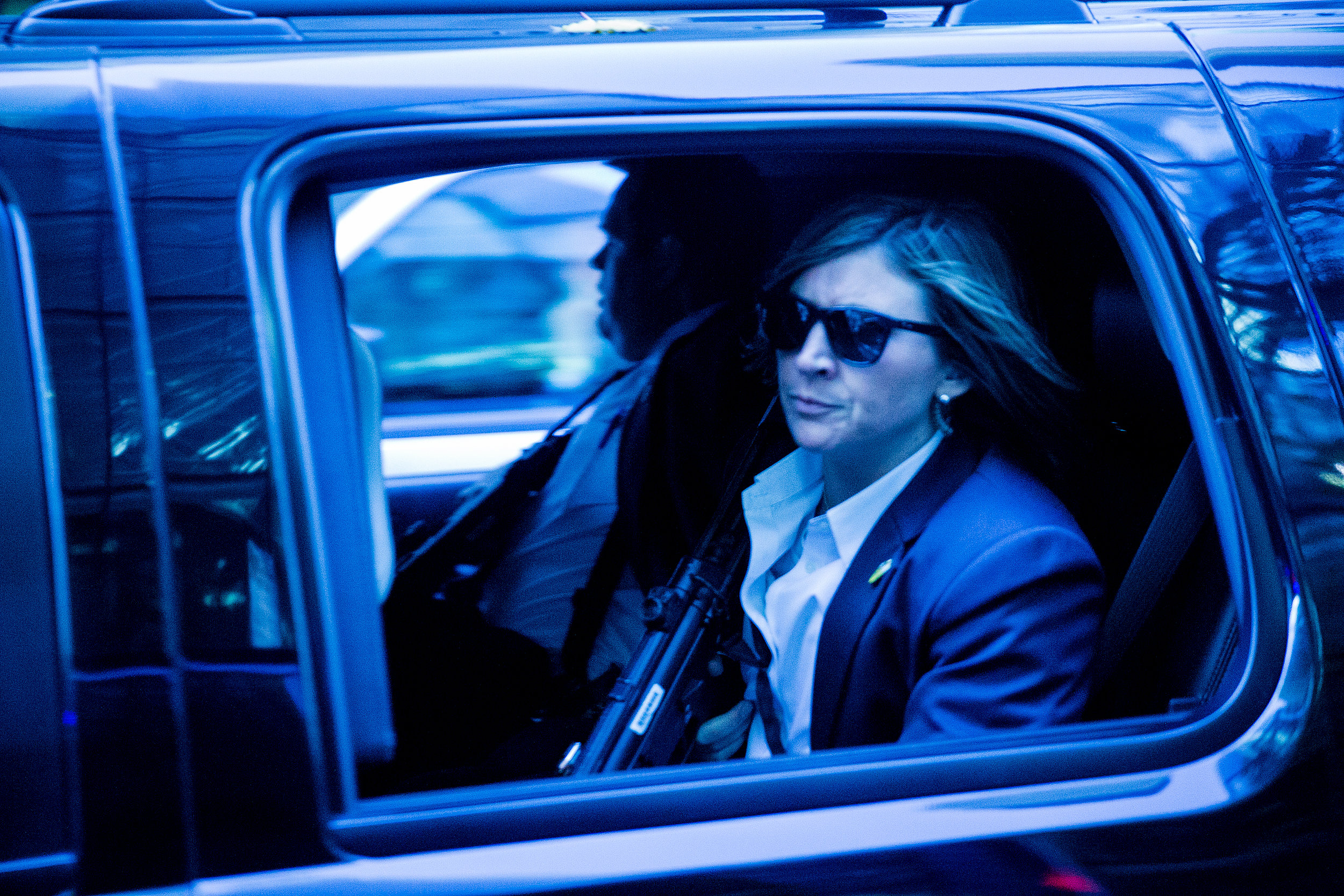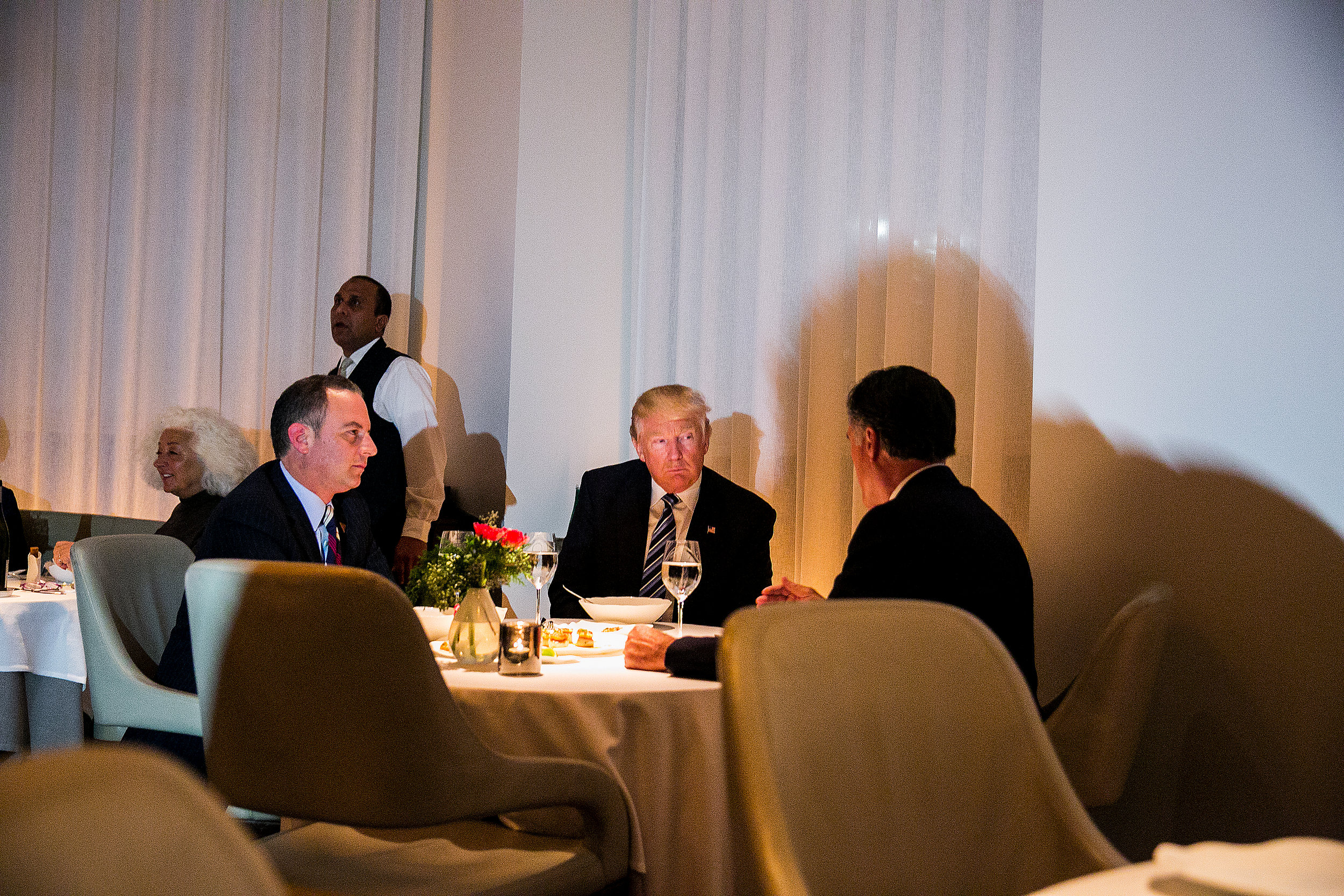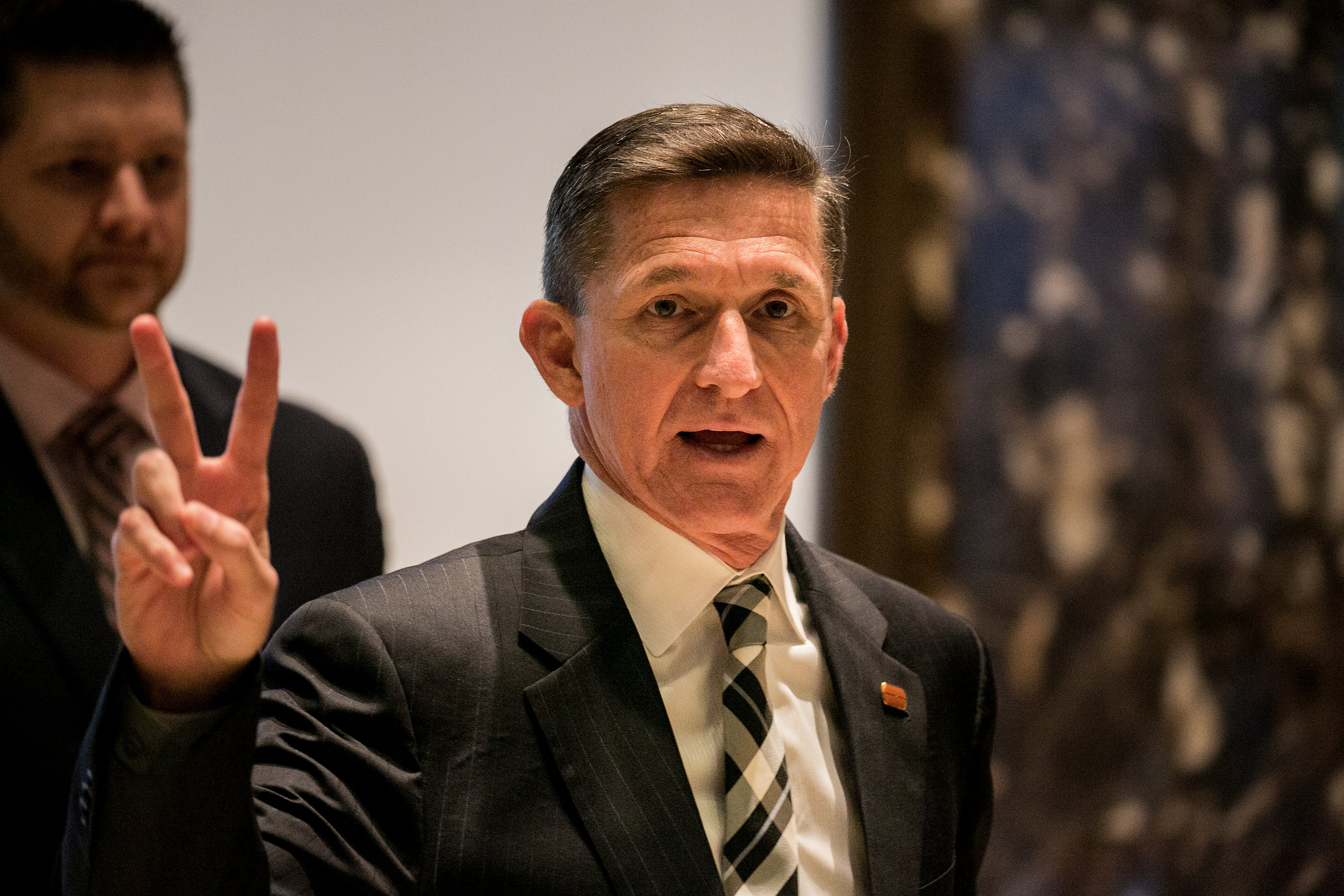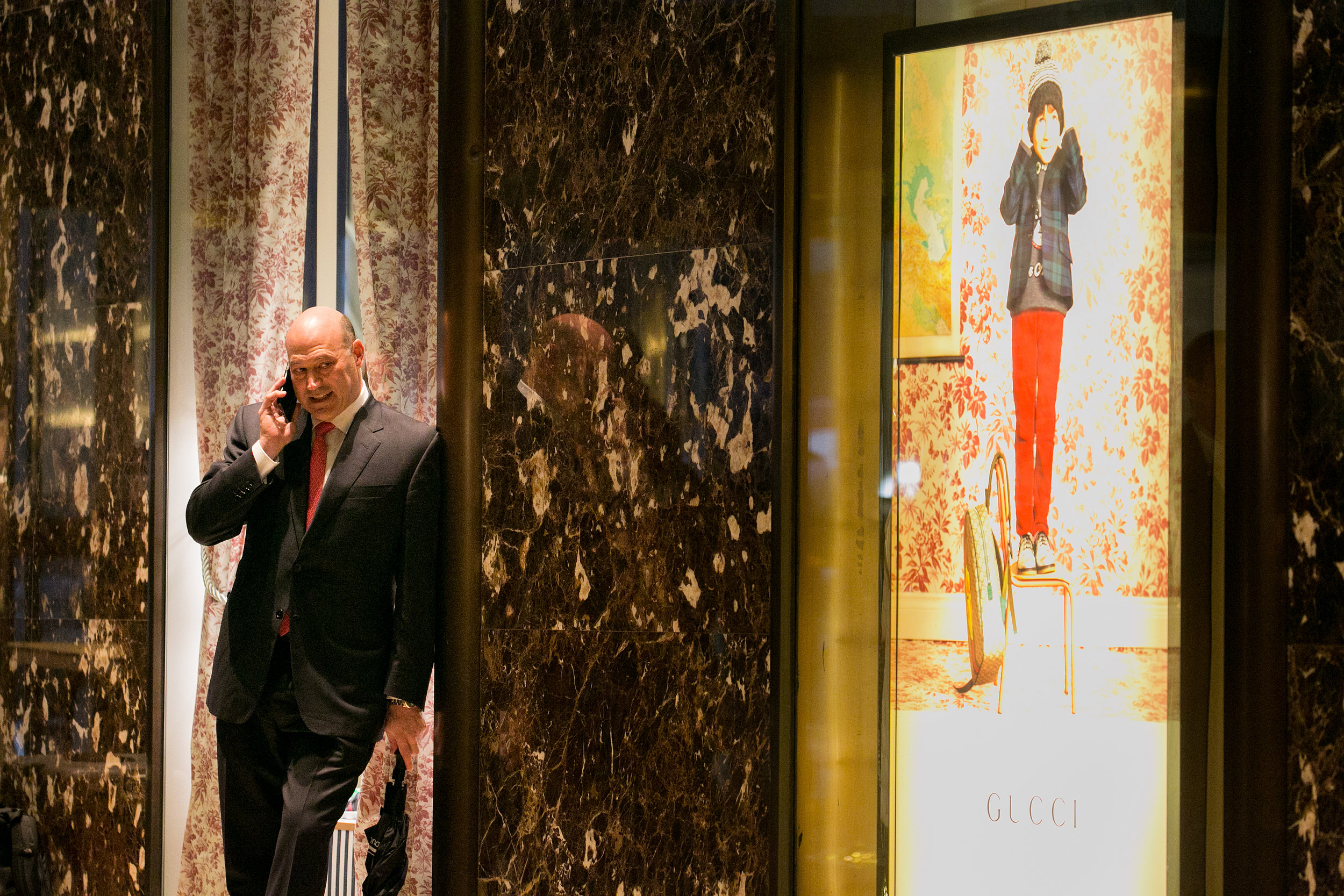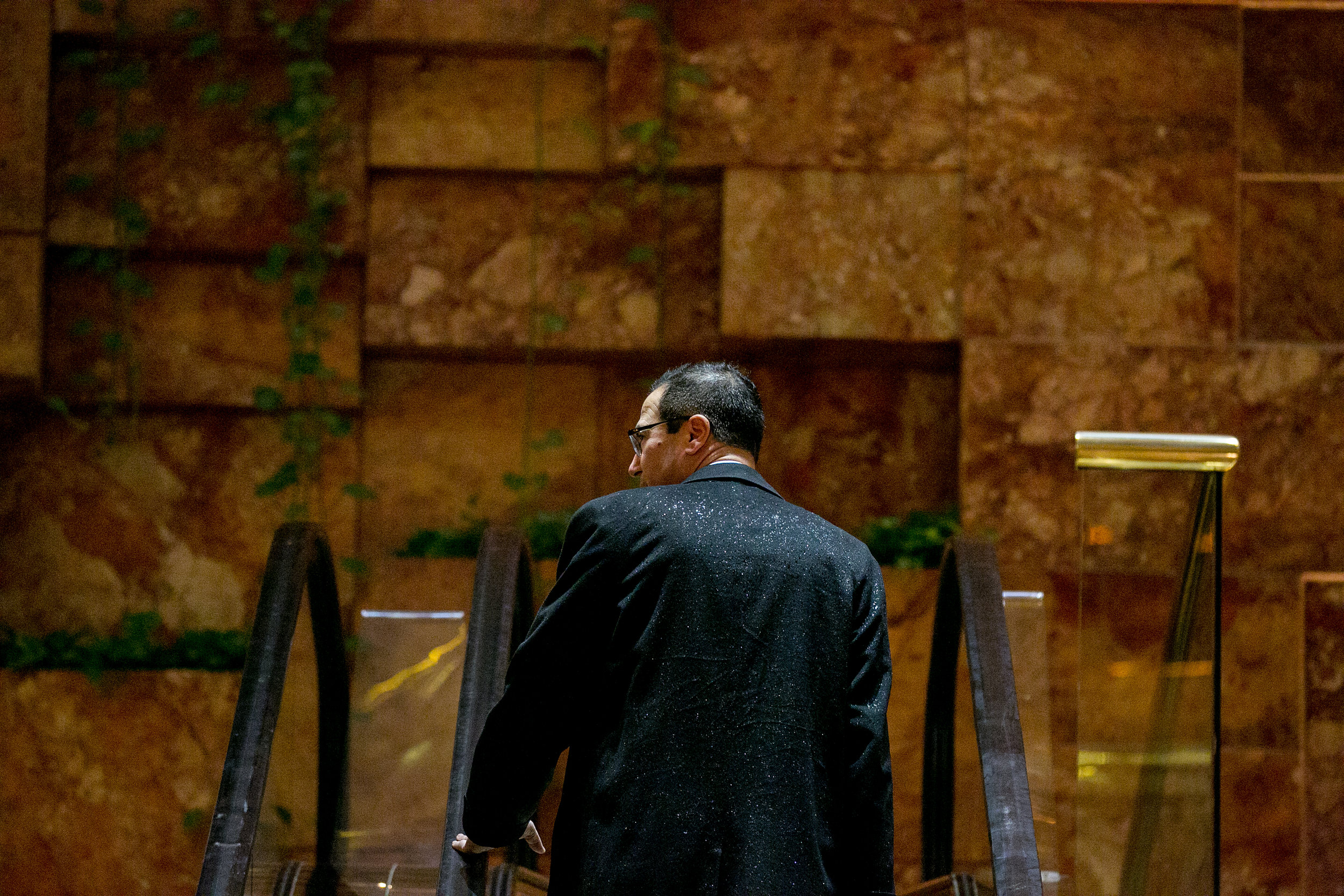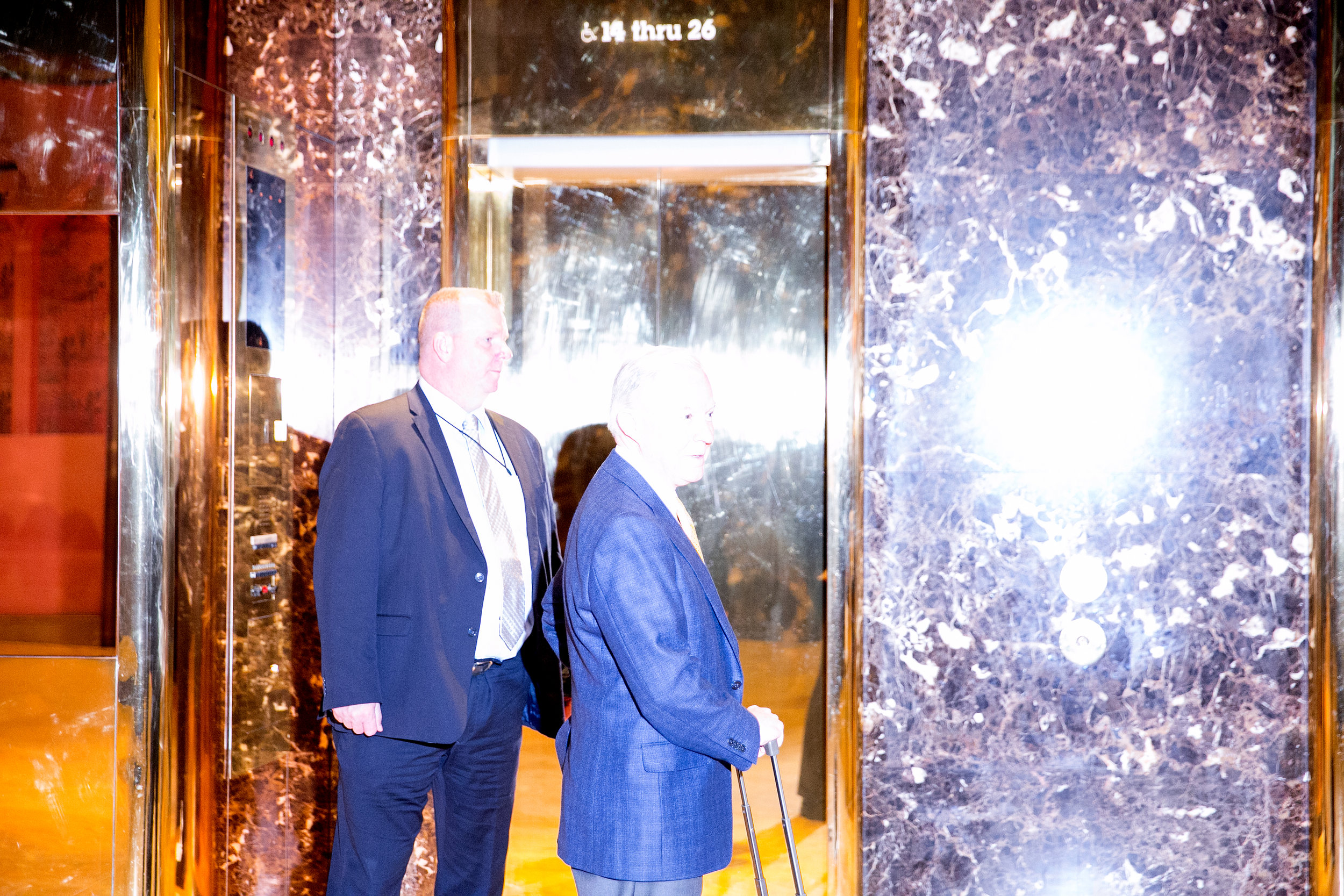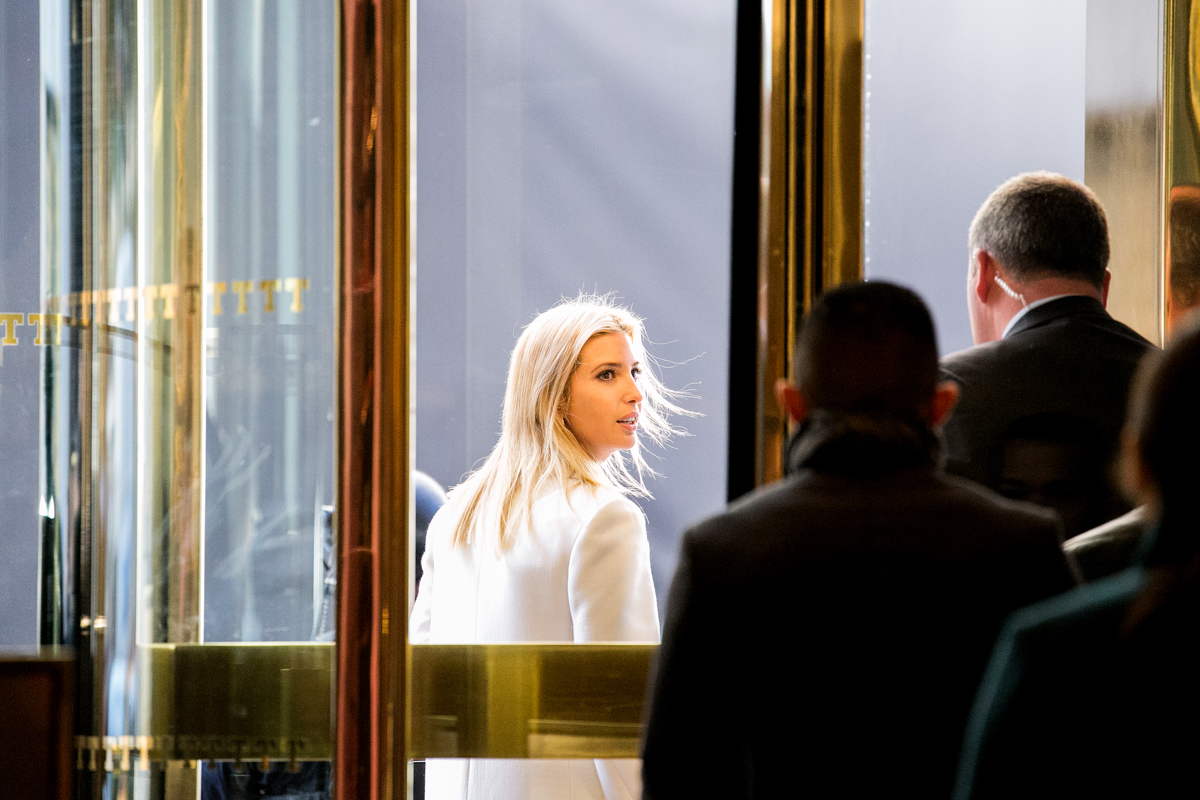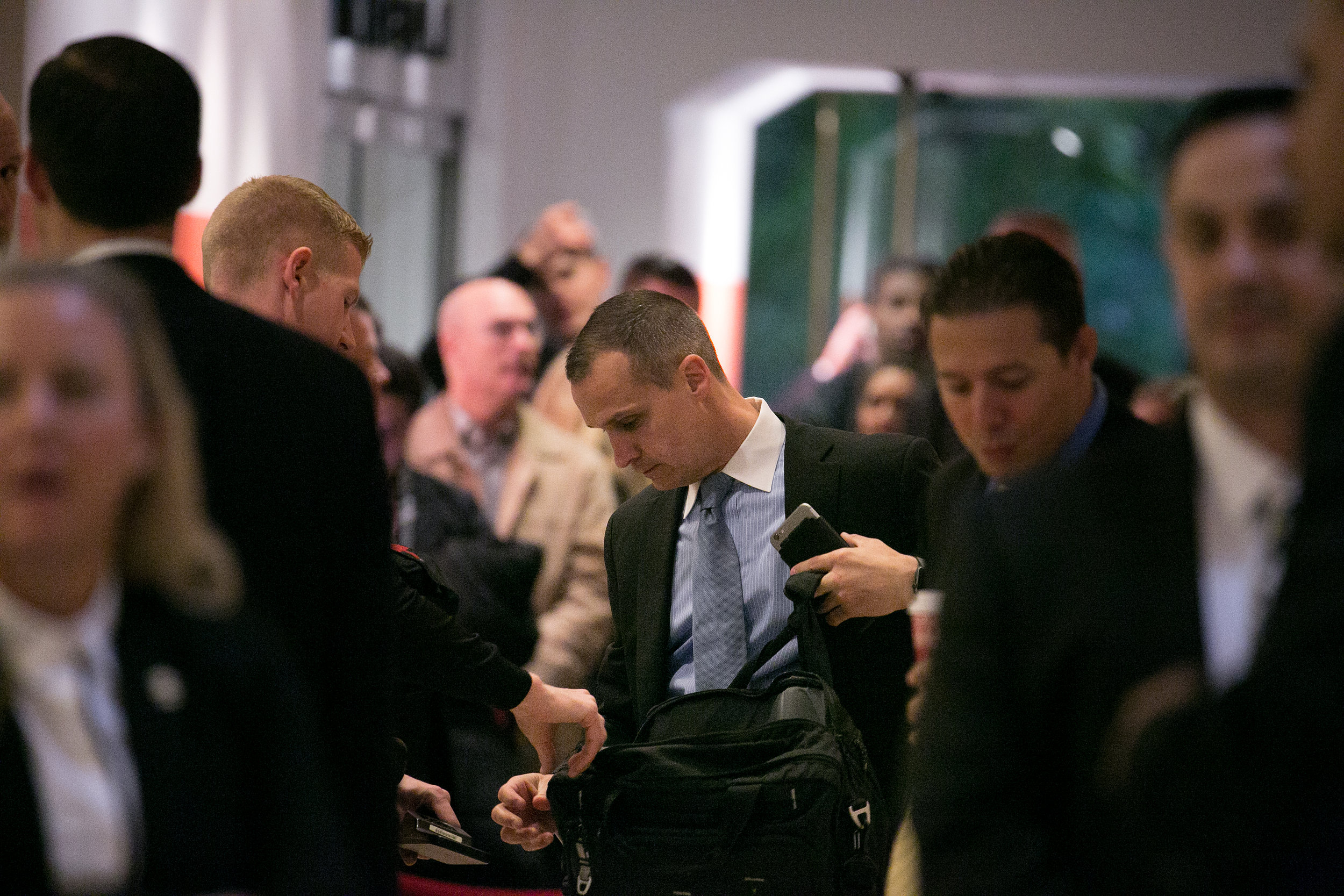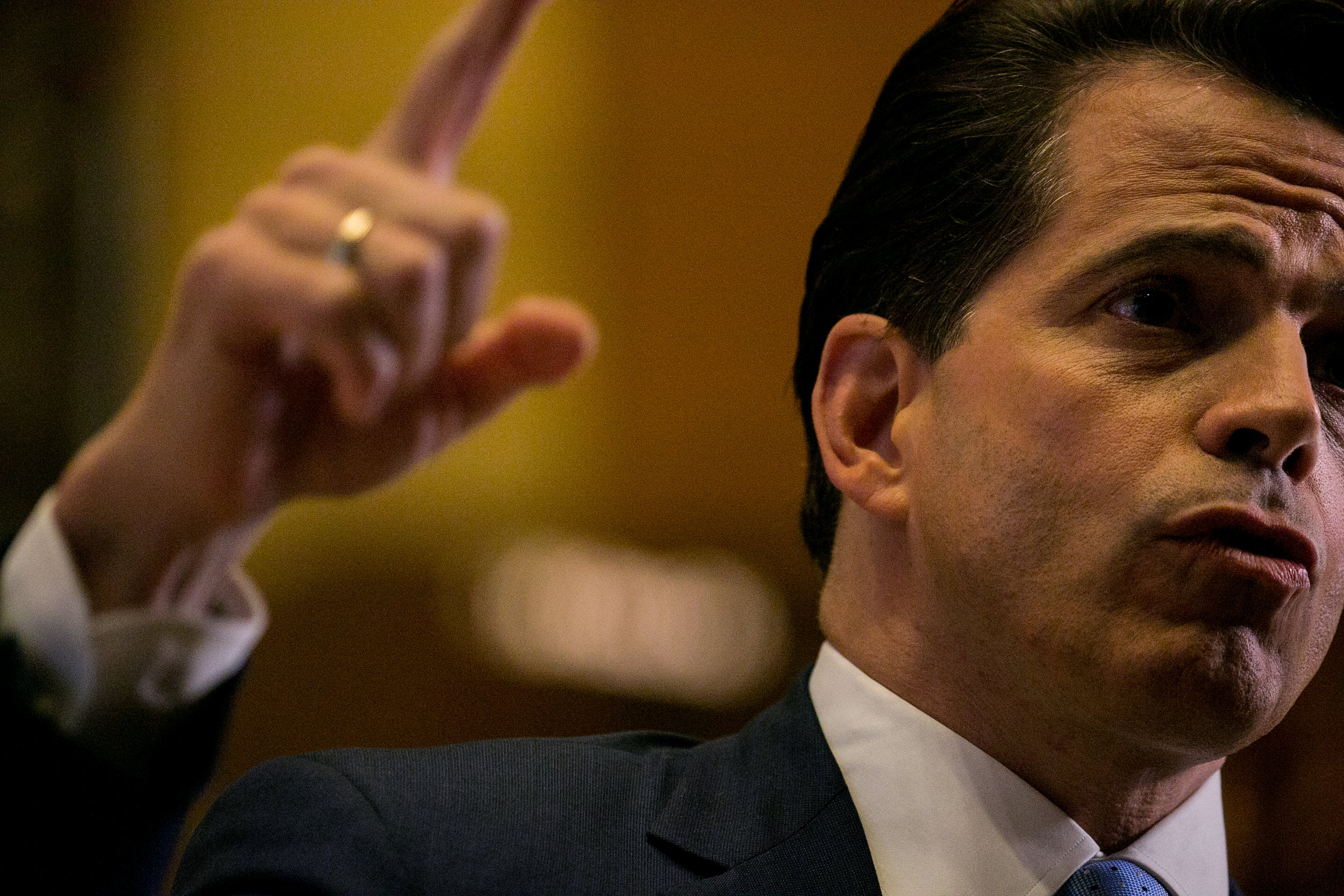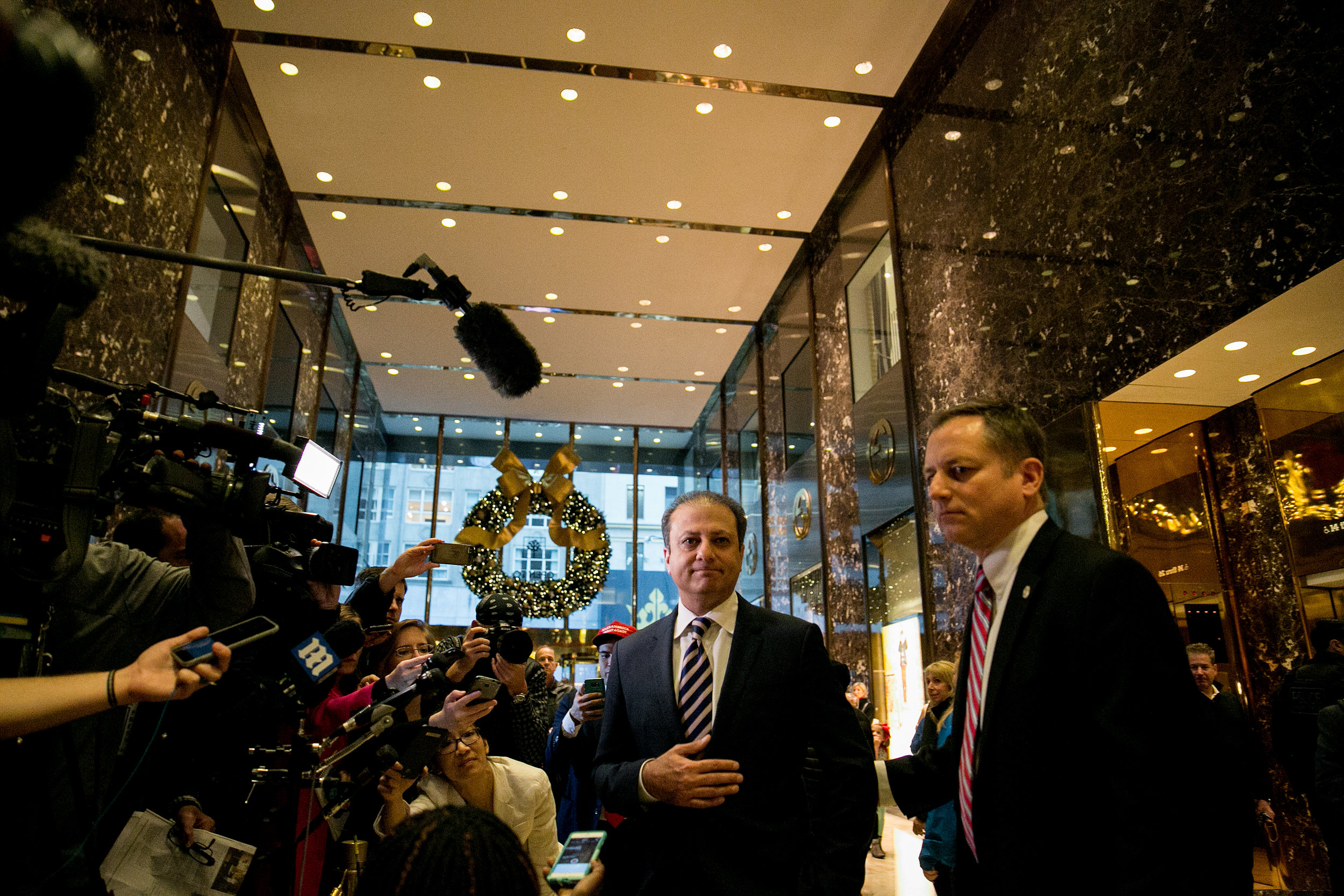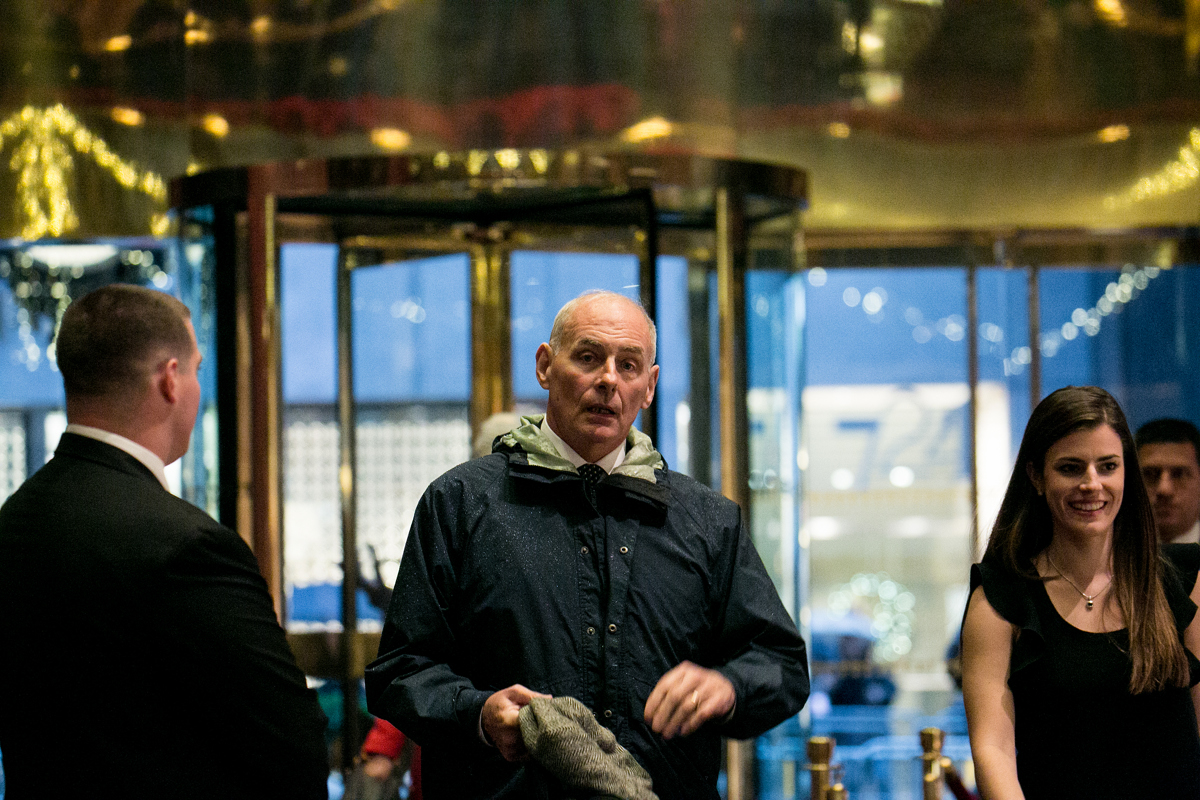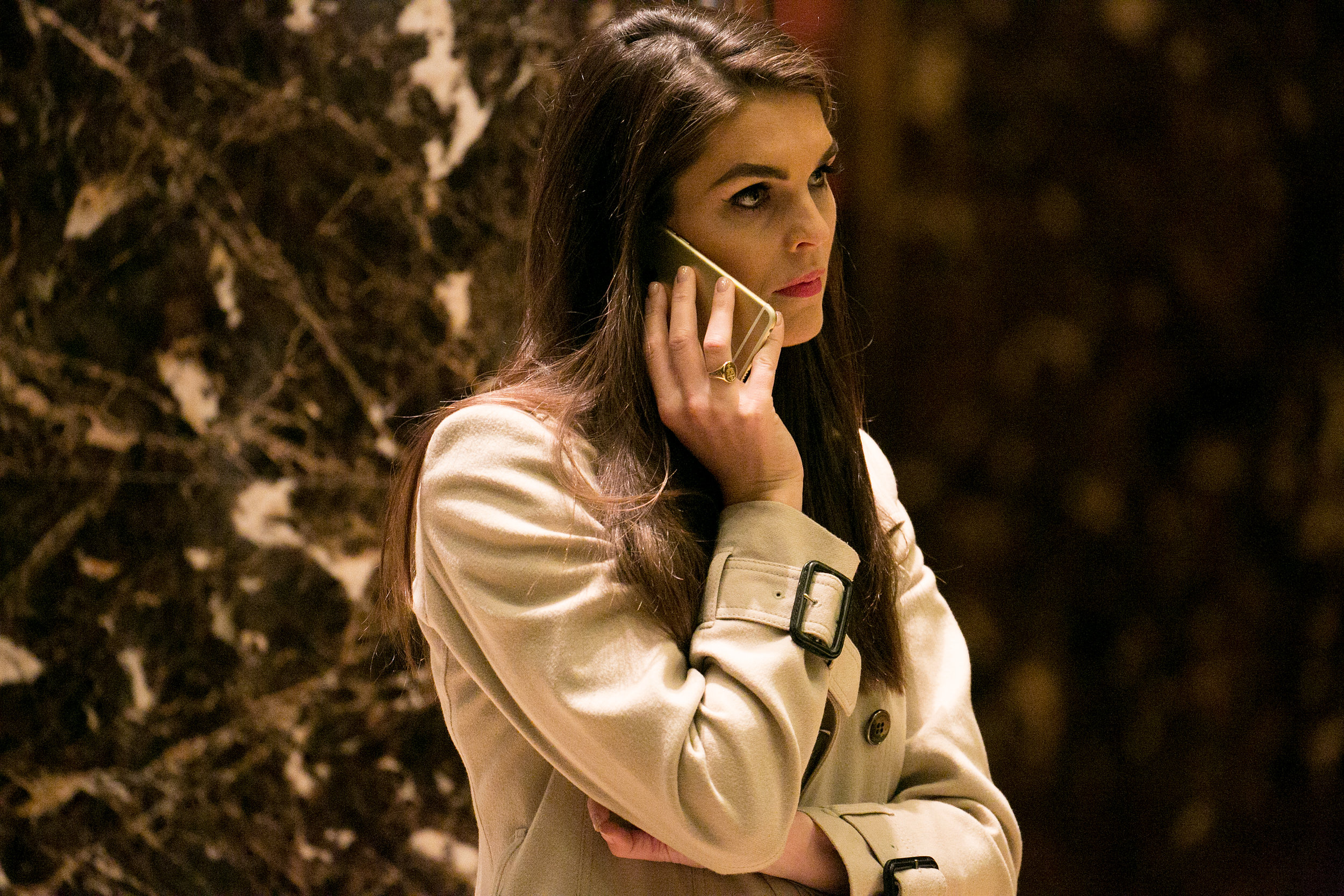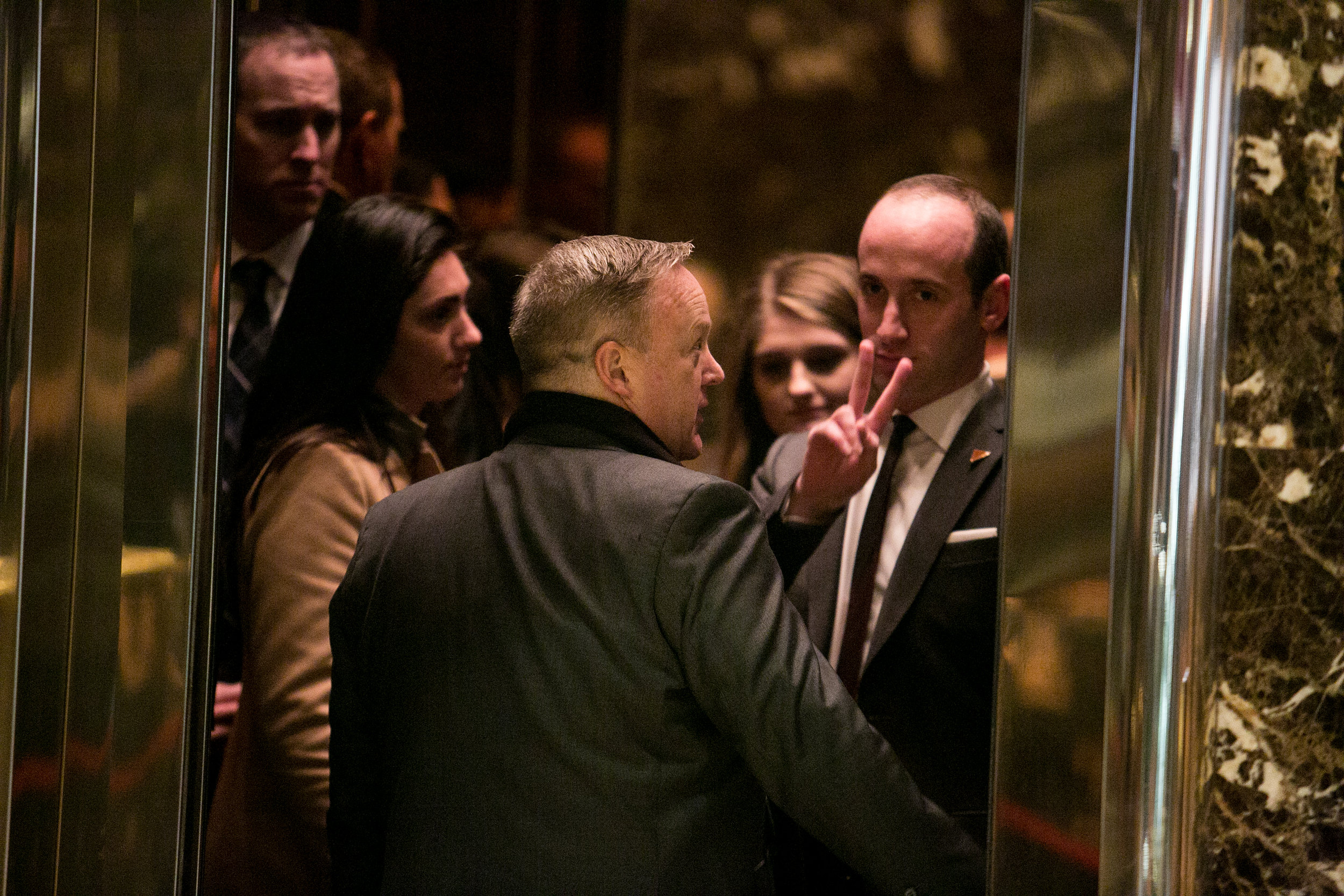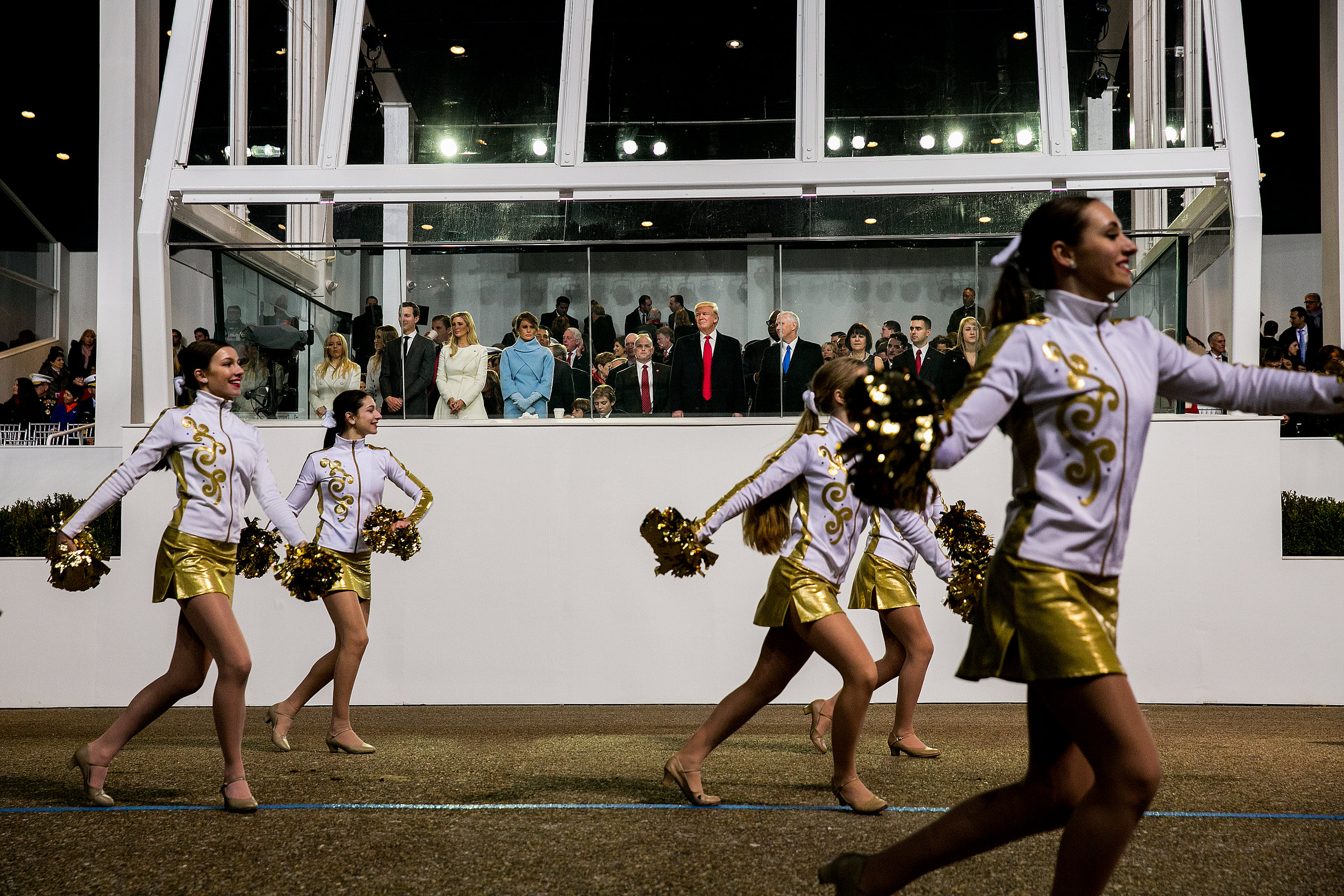NEW YORK, New York -- The bathroom at Trump Tower, like much of the building, feels like the world’s most expensive cave. After walking down a long mirrored hallway, you hit the floor-to-ceiling marble and gilded fringes on the entryway.
It was there that I was accosted by the Naked Cowboy.
“Take a picture of the Naked Cowboy in the bathroom” he blurted out at me, posing with his sidekick, another similarly-naked cowboy, in a way that blocked my path out of the restroom.
“Excuse me,” I said, pushing past, eager to not indulge him.
“You’re not real media unless you take a picture of the Naked Cowboy in the bathroom” he shouted as I walked away.
Back upstairs, inside a press pen crafted of red velvet rope, I bemoaned the incident to the group of photojournalists assembled. I told them that I wouldn’t be taking any more pictures of the Naked Cowboy.
No sooner did I say that than Kellyanne Conway, one of President-elect Donald Trump’s chief advisors strolled into the lobby. As fans posed with her for selfies and reporters shouted questions, the Naked Cowboys inched closer. Conway ignored the reporters, but shot a smile for the cameras as the pair serenaded her with a trademark jam about how Trump will “Make America Great Again.”
Taking a new tilt on his song, the Cowboy took aim at Mitt Romney, the former Republican presidential candidate who was being actively courted for the role of Secretary of State
“Romney could’ve got in on this but he wanted to be a little pissy pissy piss piss. That sounds like a good idea to me!”
My altercation with the Naked Cowboy was November 28, 2016. I bring it up because the Cowboy seemed to embody many critics’ narrative about the President-elect.
The Cowboy was a showman. He craved attention from the media. And he brought a Times Square brand of capitalism over to Fifth Avenue.
The day after this run-in, the in-town press pool, a group of journalists representing some of the largest newspapers, wire services and networks in the country, were told we were about to be “swept” for a movement -- Secret Service lingo that all of our gear and persons would be searched and vetted before climbing into the President-elect’s motorcade.
Trump was headed to dinner at Jean-Georges, an upscale restaurant inside another Manhattan building with the President-elect’s name stamped on the facade.
His guest was Romney, who one day earlier had been ridiculed by a man who would regularly lift up his cape in front of a TV camera to reveal the word “Trump” emblazoned on the butt cheeks of his underwear.
Sitting in the press bus, we were told that there was no chance we would be getting out of the motorcade to photograph Trump and Romney together. But about halfway through dinner, our press wrangler returned with good news. We were going in. We were instructed to be very quick, very quiet, very respectful of everyone else having dinner.
It was nearly pitch dark inside the restaurant and most of us were photographing without flash, trying to capture the ambience. But a colleague decided to shuck protocol and decorum and lit up the room with his flash. It caught the back of another of my colleagues and the result was a shadow cast over the head of Romney. It was a bit of foreshadowing, even if Romney didn’t know it yet, for his fate with the President-elect.
Why we were suddenly invited in that night, I’ll never know for sure. But I’ll never forget what happened next.
We were taken into the lobby to wait for what we were told would be a joint statement from Trump and Romney.
The pool organized themselves with cameras pointed at the door where they would enter. The Secret Service cleared the lobby. The door swung open once and then closed again. No one came through -- false alarm. It opened again and out walked Romney. As he approached the press, proverbial hat in hands, we could see the President-elect’s motorcade departing outside. He was ditching the press pool and his dinner guest, who was left to fend for himself, addressing reporters much like he did as he himself angled for the presidency.
“It’s like old times,” he said
The strategy about who would meet the press when and under what circumstances was by no means unique to Trump’s dinner with Romney. Indeed, if you walked through the lobby of Trump Tower on your way to a meeting with the president-elect, it meant one of two things: either you wanted to be seen, or the President-elect wanted you to be seen.
In January, when directors of various national intelligence agencies arrived to brief the President-elect, they were brought through a back door. Trump’s advisors Jared Kushner, Reince Priebus and Steve Bannon were seen only sparingly.
And in ten weeks of cameras pointing directly at the four golden elevators in the lobby, we never once saw Rex Tillerson. On December 13, the day after he was announced as Trump’s pick for Secretary of State, the pool had just wrapped up photographing the arrival of Vice President Mike Pence. We were told to get back into place quickly in the lobby, because a “special guest” was about to arrive.
Surely it was Tillerson, we thought, and began preparing accordingly. Then an aide came through to tell us that, in fact, Kanye West would be arriving soon.
“I just want to take a picture right now.”
I laughed and shrugged it off, thinking the aide was trying to be funny. Sure enough, a few minutes later, “Yeezy” strolled through the lobby with his entourage and straight into an elevator headed to meet with the next leader of the free world.
After about a half-hour, we saw a large pack of agents step into the lobby from the elevators -- a clear sign Trump was coming down -- and sure enough, he emerged with West, who kept silent, treating the clicking cameras and shouted questions like a step-and-repeat on the red carpet.
While it often felt like a sideshow inside that lobby, a new government was taking shape and it was important for the journalists in the room to stay focused on who came and went. While many were little-known to us at the time, they’ve since become household names.
There were moments in the lobby where our work felt futile and frustrating. It was an extraordinarily challenging assignment. The light inside the lobby is dim and the color of it is extremely unflattering (for camera nerds, most of these pictures are at 6400 ISO and approximately 1/160 of a second).
We stood in a press pen atop hard marble, which wore on our feet and knees. We were often given limited information, no information, or occasionally disinformation from the President-elect’s staff. On trips in the motorcade, they often would not permit photographers out of the vehicles to shoot pictures. The days were long, often 16-18 hours from door-to-door, and then we’d get up and do it again the next day.
While waiting in the pen, we spent all day fielding the same questions from understandably-curious visitors: “Does Donald Trump really live here?” “Do you just stand here all day?” “Is anyone here from Infowars?” And, the most common: “When is he coming down?”
For a while, we had a simple answer to that: he doesn’t come down. But then Trump began making surprise appearances in the lobby and we were forced to tell them that they’d have a chance of seeing him if they stuck around. Crowds would build, guards would shout at them, tourists would block our shots.
But we all had a sense that being there was important -- that this was a unique transition and a unique time in American history. We persevered, because we believed somebody had to.
Meanwhile, New York City had been transformed. Until his golf course in New Jersey earned the title, we had been calling Trump Tower the “White House North.” The President-elect’s motorcade would roll through the city, to and from LaGuardia International Airport, shutting down already-frustrating NYC commutes.
It truly felt like Fifth Avenue had become the center of the universe; a maze of barricades and law enforcement, a barrage of tourists and gawkers, a fortress and a castle, complete with guards, servants and jesters alike
All of this work proved unbelievably taxing, particularly at the tail end of covering the election full-time for almost a year.
On Jan. 11, 2017, Trump held a news conference. I left my house before 6 a.m. to secure a spot.
By the time the event started, I could barely stay standing. My body was fed up. Fed up of not sleeping. Fed up of always being away from my wife. Fed up of long hours and lunch at the Trump Grill.
The flu attacked my body with fury. This would be my last trip to Trump Tower before the inauguration.
I found a seat where I could file my photos live back to the Times’ newsroom.
That morning, Buzzfeed had published a bombshell story about a dossier of damaging information the Russian government had reportedly gathered on Trump. The already-blockbuster news conference had just been given new weight. I watched as a reporter from a Russian television station did a live shot prior to Trump’s remarks.
The President-elect came out guns blazing. He shouted down a question from CNN’s Jim Acosta, telling him “you’re fake news.” He declared the dossier was “nonsense” and suggested it might have been released by U.S. intelligence agencies. He likened the leak of the information to something that would take place in Nazi Germany.
It was exhausting and I was already exhausted. I went home and collapsed.
After more than a year deeply embedded on this historic roller coaster ride, I had very little left to give. It was the last time I saw Trump in New York City. But I still had one more job to do, in our nation’s capital.
In the days leading up to the inauguration of Donald J. Trump as the 45th President of the United States, I roamed Washington D.C. trying to capture the mood of the place.
This was a city that voted 90.9 percent for Hillary Clinton.
Now, supporters of Trump were coming to town for a party.
The morning of the inauguration, I was out early, photographing supporters flowing in on the trains throughout the District.
I rode the trains and talked to the supporters.
As a sea of red MAGA hats flowed out at one stop, a man muttered at me: “Go ahead, take my picture. I’m not ashamed to be a part of this.”
Protests dotted the streets, but they couldn’t be my focus for the day. My job was to get to the President’s review stand, where Trump would watch the parade pass by.
As Trump was sworn in as president, and I capped off a year-long journalistic journey exploring this country’s political process, I sat listening through the public address system at the review stand. I was almost two miles from the swearing-in ceremony and never actually saw the inauguration.
Trump arrived and stepped out of the car. I’d seen citizen Trump, candidate Trump, President-elect Trump and, now, President Trump.
I watched him watch the parade. There were cheerleaders, marching bands -- neither pomp nor circumstance were spared.
But it was not all fun and games. Near the end of the parade, with a four-star general and the Vice President at his side, a military unit passed by, guns hoisted to their shoulders. Trump saluted. He was now Commander in Chief.


